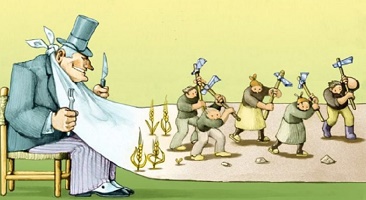What are the resources of a company?
We explain what and what are the resources of a company and the characteristics of each: human, financial, material and technical.
-
What are the resources of a company?
The organizations and companies as well as individuals, have a limited set of resources to carry out their operations, or what is the same, with those who achieve their objectives in the short and long term.
Most of these resources are part of your assets , that is, they belong to it, or at least they are put at your service. Therefore, good administration of them will result in better or worse results.
The resources of a company are the different elements that intervene in the productive chain . Its presence is essential to guarantee the obtaining of a product, that is, to guarantee the perpetuity of the economic circuit of the company.
Some intervene directly in the process , that is, they serve to transform the raw material into processed goods. Others serve to guarantee the supply of it or to eventually allow the modernization of other resources, thus keeping the company up to date.
Although we will detail them later in their respective and specific areas, the resources of a company are classified, at the outset, into two types:
- Tangible resources , those that can be touched, accumulated, stored and moved, that is, they are concrete and physical, as is the case with machinery or money.
- Intangible resources , those that cannot be touched, since they are not physical or concrete, but that is not why they are less valuable, as is the case of information, human talent or the so – called know-how (knowing how to do things the best possible mode).
-
Human Resources of a Company

The main and most crucial resource of any organization is its workers , that is, its human employees, throughout its different positions, positions and sectors within the company. It is they who are responsible for executing, controlling and supervising production , even in highly automated fields.
Obviously, they are the only resource of the company that does not belong to it , nor is it part of its assets, but rather constitutes its labor force in exchange for a salary remuneration, that is, something like a lease of work capacity.
Human resources may have more or less degree of specialization, and may be devoted to the productive process per se , or to administrative and control tasks , which guarantee its perpetuity.
At the same time, their talents and abilities form an intangible asset of the company , which can be improved through various training processes, such as studies or the accumulation of experience. In fact, the more knowledge and experience a worker accumulates, the higher their salary wages will be.
-
Financial Resources of a Company
Financial resources are understood as capital resources , that is, the amount of money in the corporate assets , including all of its liquidable assets, as well as its ability to borrow or obtain capital through external financing . They can be money, debt bonds, stocks, credit tools, etc.
Financial resources are key to launching the rest of the company’s resources , and constitute the fuel that keeps the productive circuit going. Therefore, its correct management is key to the benefit of the organization.
-
Material resources

Material resources are the set of tangible assets that are part of the company’s assets , whether movable or immovable (that is, they may or may not change locations).
This includes real estate, all machinery (machines, computers, etc.), work tools, vehicles and also the total stock or warehouse of raw materials and products already made.
These types of resources materially support the production process . In some cases they allow certain margins of effectiveness, speed or precision, since it is not the same to manufacture a product with tools than without them.
-
Technical or technological resources
In this case we will refer to the systems , processes and knowledge that allow the organization to carry out the production process , or at least carry it out in a certain way (since it is not the same to know what is being done, to improvise) .
The technological resources can be tangible or intangible, since they cover from the physical tools to the computer systems , the knowledge that the company manages (such as secret product formulas), and even the telecommunications and information tools that are at the service of the same .
Production usually does not depend directly on this type of resources, but it does have a very high impact on it, as it provides greater margins of control and supervision, of effectiveness, of documentation and coordination , when not simply greater specialized knowledge to innovate and create new ones. products from which it is already known to do.





